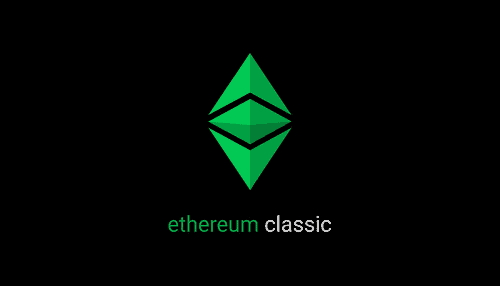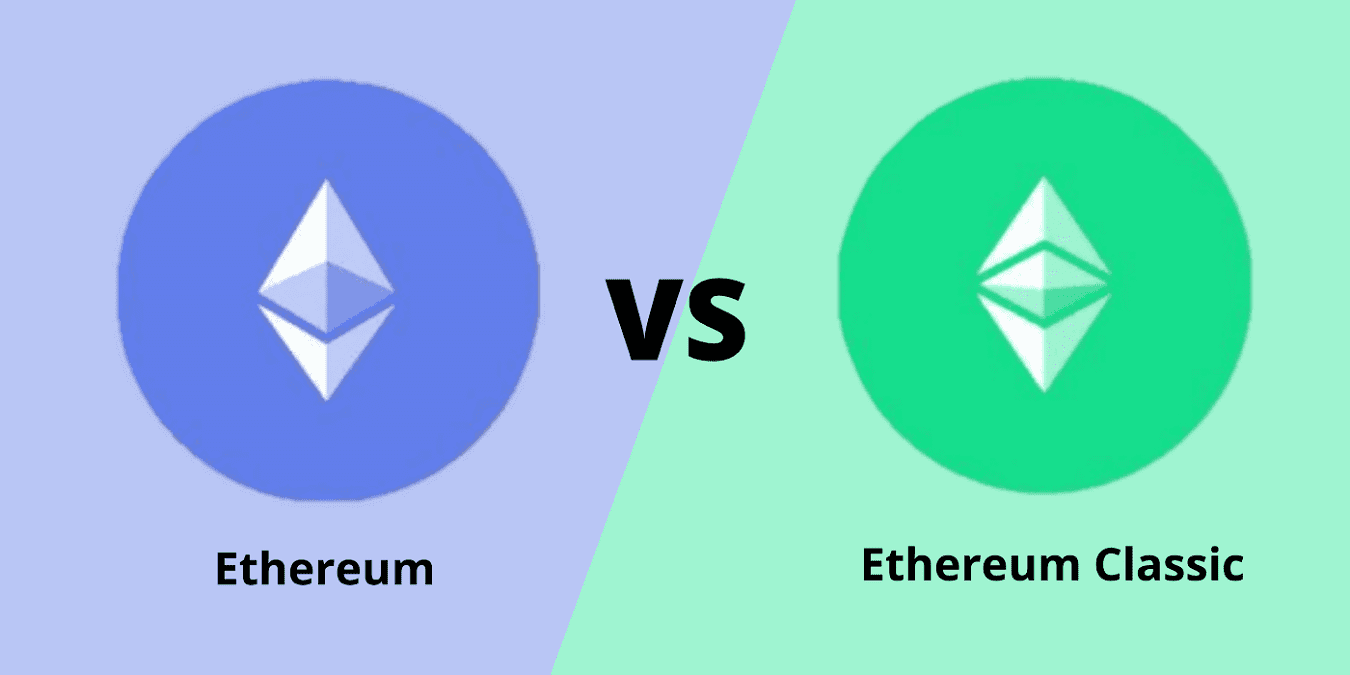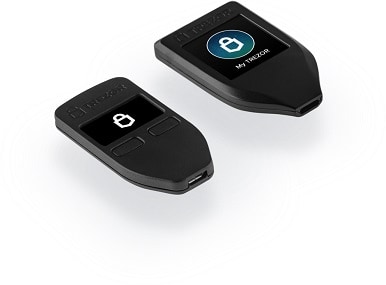How To Buy Ethereum Classic (ETC)?

A common question you often see on social media from crypto beginners is “Where can I buy Ethereum Classic?” Well, you’ll be happy to hear it is actually quite a simple and straightforward process. Thanks to its massive popularity, you can now buy Ethereum Classic on most cryptocurrency exchanges, including Coinbase and Binance in 3 simple steps.
Step 1: Create an account on an exchange that supports Ethereum Classic (ETC)
First, you will need to open an account on a cryptocurrency exchange that supports Ethereum Classic (ETC).
We recommend the following based on functionality, reputation, security, support and fees:
1
Bybit
Fees (Maker/Taker) 0.1%*-0.1%*
Cryptocurrencies
Available for Trade 400+
Sign-up bonus
15% reduced trading fees & up to $30,000 sign-up bonus*
Available in
Europe, Asia, Oceania, Africa
2
Binance
Fees (Maker/Taker) 0.075%*-0.1%*
Cryptocurrencies
Available for Trade 500+
Sign-up bonus
10% reduced trading fees*
Available in
Europe, Asia, Oceania, Africa
In order to sign up, you will need to enter some basic information, such as your email address, password, full name and, in some cases, you might also be asked for a phone number or address.
Note: On specific exchanges, you might need to complete a Know Your Customer (KYC) procedure in order to be able to purchase cryptocurrency. This is most commonly the case with licensed and regulated exchanges.
Step 2: Deposit funds into your account
Many cryptocurrency exchanges will allow you to purchase Ethereum Classic (ETC) with fiat currencies, such as EUR, USD, AUD and others. Furthermore, they will also provide you with multiple deposit methods through which you can fund your fiat account, such as credit and debit cards, ewallets or direct bank transfers.
Note: Some payment methods will have higher fees than others, such as credit card payments. Before funding your fiat account on your chosen exchange, make sure to do your due diligence to find out the fees involved with each payment method to avoid unnecessary costs.
Step 3: Buy Ethereum Classic (ETC)
This process is similar across almost every cryptocurrency exchange. All you have to do is find a navigation bar or a search bar, and search for Ethereum Classic (ETC) or Ethereum Classic (ETC) trading pairs. Look for the section that will allow you to buy Ethereum Classic (ETC), and enter the amount of the cryptocurrency that you want to spend for Ethereum Classic (ETC) or the amount of fiat currency that you want to spend towards buying Ethereum Classic (ETC). The exchange will then calculate the equivalent amount of Ethereum Classic (ETC) based on the current market rate.
Note: Make sure to always double-check your transaction details, such as the amount of Ethereum Classic (ETC) you will be buying as well as the total cost of the purchase before you end up confirming the transaction. Furthermore, many cryptocurrency exchanges will offer you their own proprietary software wallet where you will be storing your cryptocurrencies; however, you can create your own individual software wallet, or purchase a hardware wallet for the highest level of protection.
For more in-depth instructions, our ‘Absolute Beginner’s Guide To Cryptocurrency Investing‘ will take you through the process step-by step. In addition to providing instructions for sending and receiving your cryptocurrency.
And if you’re completely new to crypto our beginner, intermediate and advanced level articles will get you up to speed with everything you need to know about the cryptocurrency space starting out.
What is Ethereum Classic (ETC)?
Ethereum Classic is a decentralized blockchain platform that lets anyone build and use decentralized applications that run on blockchain technology. Like Bitcoin, no one controls or owns Ethereum Classic – it is an open-source project built by people around the world. Unlike the Bitcoin protocol, Ethereum Classic was designed to be adaptable and flexible. It is easy to create new applications on the Ethereum Classic platform.
In 2014, Ethereum founders Vitalik Buterin, Gavin Wood and Jeffrey Wilcke began work on a next-generation blockchain that had the ambitions to implement a general, fully trustless smart contract platform.
The Ethereum blockchain was initially established as a single network in which transactions were facilitated by the cryptocurrency ether, or ETH. As different teams used the platform to launch their own tokens, the new network quickly became popular for initial coin offerings.
The DAO, a decentralized venture fund in which investors voted on which assets to invest in, was one of the most successful ICOs. The DAO quickly accumulated more than 11 million ETH from over 18,000 investors before unknown hackers discovered a smart contract bug that allowed them to withdraw roughly one-third of The DAO’s ether.
Because of the magnitude of the hack, many investors proposed reversing the Ethereum blockchain in order to help the affected investors, while others argued that doing so would set a precedent for future bailouts. Following a hurried poll, 97 percent of the community voted to restore the lost funds via a hard fork.
As a result, the Ethereum blockchain was divided into two distinct networks in 2016. The newer network was given the name Ethereum and uses the cryptocurrency ETH or ether. ETC is used by the older one, known as Ethereum Classic.
ETHEREUM CLASSIC (ETC) Tokenomics
On 11 December 2017, the total supply of Ether (ETC) on Ethereum Classic was hard capped at 210,700,000 ETC via the Gotham hard fork upgrade. This added a Bitcoin inspired deflationary emission schedule that is documented in Ethereum Classic Improvement Proposal (ECIP) 1017. The emission schedule, also known as 5M20, reduces the block reward by 20% every 5,000,000 blocks. Socially, this block reward reduction event has taken the moniker of “The Fifthening.”
How does Ethereum Classic work?
Ethereum is a blockchain platform similar to bitcoin, with one major difference: it can be used as a distributed computer to run self-executing smart contracts in addition to recording value transactions.
Ethereum Classic facilitates smart contracts by providing decentralized governance. In other words, the contracts can be enforced without the involvement of a third party, such as a lawyer. Smart contracts are similar to if-then statements in that if the contract’s actions are completed, the contract’s responding parameters are completed. If the contract parameters are not met, a penalty, a fee, or the contract may be voided, depending on the terms established at the start of the contract.
In a real estate transaction, for example, if the contract required an upfront deposit to be paid by a certain date and the funds were not received, the contract could be voided. A distributed ledger or blockchain network contains the smart contracts. A distributed ledger is a ledger of transactions and contracts that is kept and maintained in multiple locations in a decentralized manner.
The agreement between a buyer and seller is written in lines of code within the smart contract, which self-executes based on the contract terms. As a result, there is no need for external monitoring or censorship by a central authority because the code governs contract execution.
What Is a Smart Contract?
Simply put, a smart contract is a written agreement between two parties. When the two parties’ agreed-upon conditions are met, the blockchain will automatically execute the terms of the contract.
Because blockchains are also immutable (their records cannot be changed), smart contracts enable certain businesses to do things faster, more efficiently, and without the need for a third party.
Smart contracts are becoming an increasingly important part of how cryptocurrency works. Smart contracts can be used by many different types of cryptocurrencies, but Ethereum was the first and continues to be the most prominent leader in the space.
Ethereum Classic Roadmap
The Ethereum Classic project has seen numerous upgrades and improvements since the split. The project’s goal remains to build a global payment network based on smart contracts that can function without centralized governance.
Ethereum Classic, like other cryptocurrencies, will most likely continue to strive to be a digital store of value, which means it can be saved and exchanged while retaining its value. Similar to money, the digital store of value for crypto includes its purchasing power, which can be quickly converted into cash or used to purchase another asset.
Ethereum Classic vs Ethereum
In terms of fundamental functionality, ETC and ETH are identical. Developers, for example, can use open-source code to create and run decentralized applications (dApps). They can also generate ERC-20 tokens for their apps.
However, Ethereum Classic’s primary distinguishing feature is its incompatibility with ETH blockchain updates. A hard fork is an update that is incompatible with previous versions. The new chain, along with its users (nodes), is completely cut off from the original chain by implementing a new set of rules. As a result, the original chain (Ethereum Classic) is unable to access any updates occurring on the new chain (Ethereum).
One might ask, “What is the point of ETC if it can’t be updated?” As previously stated, the Ethereum Classic’s foundation is ideological rather than technical. Its primary relevance, or significance, is in preserving the original and unaltered Ethereum code. ETC serves as an unaltered historical record of the Ethereum network in this sense.
The native cryptocurrency of Ethereum Classic is also known as Ether, which can cause some confusion. The distinction is found in their ticker symbols. While the new Ether is represented by the symbol ETH, Ethereum Classic is represented by the symbol ETC.
In terms of functionality, both ethers are identical. For example, Ethereum Classic users pay the gas fee when conducting transactions with ETC. Finally, ETC can be used for anything that any other cryptocurrency can.
Ethereum Classic development updates in 2023
In 2023, Ethereum Classic (ETC) has continued to evolve, maintaining its distinct identity within the blockchain space. Key highlights of its development approach and updates include:
-
Decentralized Nature of Development: Ethereum Classic’s development process is notably different from typical corporate or crypto projects due to its decentralized nature. This approach emphasizes a meritocratic, organic process rather than a centralized roadmap, following the footsteps of Bitcoin. ETC’s development strategy values caution and community-driven innovation, as opposed to rapid, potentially risky changes.
-
Evolutionary Pathways: Instead of a traditional roadmap, Ethereum Classic adopts an evolutionary pathway approach. This method allows for innovative ideas to emerge organically from anywhere within the community and be implemented if they gain consensus. Such flexibility in development is exemplified by the implementation of the Thanos fork, which reduced the size of the Directed Acyclic Graph (DAG) and increased network security and value.
-
Implementation of the Thanos Hard Fork: A significant development for Ethereum Classic in 2023 is the Thanos hard fork. This upgrade improves Ethereum Classic’s mining algorithm, enhancing resistance to ASIC miners and overall network security. The hard fork also includes updates like reducing the block time and adjusting the block reward.
-
Introduction of MESS Consensus Algorithm: Another major upgrade planned for 2023 is the MESS (Modified Exponential Subjective Scoring) consensus algorithm. MESS aims to improve network scalability and reduce the likelihood of blockchain reorganizations.
-
Emerald Wallet and New dApps: Ethereum Classic plans to improve user experience by introducing a new wallet, Emerald, designed to be user-friendly and facilitate interaction with decentralized applications (dApps) on the Ethereum Classic network. Furthermore, the development team is exploring new dApps and use cases for the platform, potentially focusing on decentralized finance (DeFi) and supply chain management.
-
Ongoing Community-driven Projects: The Ethereum Classic community continues to propose and discuss various projects and improvements through the Ethereum Classic Improvement Proposal (ECIP) process. This method ensures that changes are vetted and agreed upon by a broader community, aligning with the decentralized ethos of Ethereum Classic.
These developments demonstrate Ethereum Classic’s commitment to staying true to its core principles of decentralization and security, while also adapting and innovating to remain relevant in the rapidly evolving blockchain landscape.
Official website: https://ethereumclassic.org/
Best cryptocurrency wallet for Ethereum Classic (ETC)
There are plenty of different crypto wallets available. The best one for you depends on your general trading habits and which provides the most security in your situation. There are two main types of wallets: hot storage wallets (digital) and cold storage or hardware wallets (physical). Both have their pros and cons, and there is not necessarily a right or wrong answer when it comes to figuring out which crypto wallet is best for you.
HOW DO I DECIDE WHICH cryptocurrency WALLET TO USE for Ethereum Classic (ETC)?
Deciding which type of wallet to use depends on a variety of factors, including:
- How often you trade. In general, hot wallets are better for more active cryptocurrency traders. Quick login ability means you are only a few clicks and taps away from buying and selling crypto. Cold wallets are better suited for those looking to make less frequent trades.
- What you want to trade. As mentioned earlier, not all wallets support all types of cryptocurrencies. However, some of the best crypto wallets have the power to trade hundreds of different currencies, providing more of a one-size-fits-all experience.
- Your peace of mind. For those worried about hacking, having a physical cold wallet stored in a safe deposit box at the bank or somewhere at home, provides the safest, most secure option. Others might be confident in their ability to keep their hot wallets secure.
- How much it costs. It is important to investigate the costs associated with each wallet. Many hot wallets will be free to set up. Meanwhile, cold wallets, like any piece of hardware, will cost money to purchase.
- What it can do. While the basics of each cryptocurrency wallet are the same, additional features can help set them apart. This is especially true of hot wallets, many of which come with advanced reporting features, insights into the crypto market, the ability to convert cryptocurrencies and more. Security features can also be a good differentiator.
For a more in-depth overview of cryptocurrency wallets visit our “Cryptocurrency Wallets Explained” guide.
If you’re going to be dealing in larger volumes of crypto, investing in cold storage might prove advantageous.
Most widespead examples of this being the Ledger Nano and the Trezor.
Ledger manufactures cold storage wallets designed for users who want increased security. Their wallets are a physical device that connects to your computer. Only when the device is connected can you send your cryptocurrency from it. Ledger offers a variety of products, such as the Ledger Nano S and the Ledger Nano X (a bluetooth connected hardware wallet).
Trezor is a pioneering hardware wallet company. The combination of world-class security with an intuitive interface and compatibility with other desktop wallets, makes it ideal for beginners and experts alike. The company has gained a lot of the Bitcoin community’s respect over the years. Trezor offers two main models – The Trezor One and Trezor Model T (which has a built in touch screen).
Ethereum Classic (ETC) Price & Charts
- Market Capitalization And Daily Trading Volume
- Current Market Price Of Every Cryptocurrency Relative To USD (And Some Local Currencies)
- Circulating And Total Supply
- Historical Charts With Prices Relative To USD, Bitcoin (BTC), And Ethereum (ETH).


























